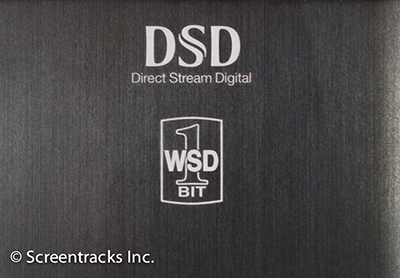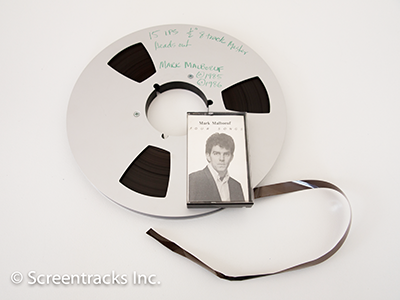Audio
Pono Player
April/05/14 17:53
It is, at the very least, the winner for the most beautifully marketed personal music player in existence, and possibly the new template for Kickstarter campaigns. Doesn’t hurt the experience to have Neil Young invite you backstage into his custom Caddy to experience hi-res playback of classic rock and soul. The Pono Player (pono is Hawaiian for “righteous”) sure looks like a winner, at least going by the endorsements of both major rock stars and random teenagers.
As a gear slut from way back, I couldn't help but be swayed, and signed up as a Kickstarter sponsor in order to get a first-generation player, due to come out in October. Neil has been on this mission for quite a while now, and frankly it is great to see his vision of high-end music for the masses coming to fruition.
As such this ends up being a must see at this month’s Axpona show in Chicago.
As a gear slut from way back, I couldn't help but be swayed, and signed up as a Kickstarter sponsor in order to get a first-generation player, due to come out in October. Neil has been on this mission for quite a while now, and frankly it is great to see his vision of high-end music for the masses coming to fruition.
As such this ends up being a must see at this month’s Axpona show in Chicago.
Comments
Korg DS-DAC 100
February/08/14 11:38
A reasonably priced DSD DAC from a pro equipment manufacturer with lots of output options

The KORG DS-DAC 100 looks like a good idea - it’s what most people would want; headphone out, RCA and XLR out. Been using Korg Audiogate software for years; it’s not as pretty and full-featured of a user interface as other software players that play DSD files, but it’s very straightforward and does all manner of conversions. After all, it was designed more as a tool for people recording original DSD files rather than a means of home-user playback.
At $600, it looks like a good price point (at the moment) for having the full choice of outputs. I currently have the Resonessence Labs Herus (around $400), which only has a headphone output (it’s sort of a “DSD Dragonfly”) but it has high enough output to drive Sennheiser HD 600 headphones (moderately hard to drive) and I have connected it with a Y cable to my receiver with good results. The Herus utilizes the ESS Sabre DAC chip - ES9010-2M. Not sure if it sounds as good as playback from the Korg MR-1000, but that’s a test we could do. Hard to compare when you’re sticking totally different types of interconnects between source and amp. I haven’t set up any kind of optimized computer playback for DSD either - I just ran it off my old MacBook Pro (USB 2).
I have owned the Korg MR-1000 for a few years now, and I’ve felt DSD was a superior-sounding format to PCM since I first had a Sony 777ES SACD player, which is why I got the Korg for transferring albums to digital. It just captures more information in a natural way, to my ears. Having said that, in the years between, PCM recording and playback has improved immensely. My ARCAM DV-139 player played back high bitrate PCM (via DVD-audio) stunningly. The Oppos also do a fab job with PCM. Neither of them sound quite right playing back SACD/DSD though, compared to Sonys.
I’m not sure converting anything is a good idea, if it’s already digital. I generally feel that “good” (insert your sample-and-bitrate here) NATIVE recording and playback is the way to go. In other words, if you already have a well-recorded and properly-converted-to-(insert your sample-and-bitrate here) file, then a good playback chain for doing that type of file should be good.
Of course, there are lots of types of files, so the Sony HAP-Z1ES (the name even looks “happy”) type of device should be the future. Even us techno-audiophiles can get tired of all of the farting around necessary to make stuff play back properly.
As for the work involved in properly digitizing vinyl - it’s still godforsakenly labor-intensive. Audiogate makes it fairly easy to chop a side into tracks, but you still have to do it, one way or another. Then there’s the whole thing of changing or improving some aspect of your playback chain - which then makes you want to re-record everything you’ve already done. SO MANY variables in the vinyl reproduction chain!

The KORG DS-DAC 100 looks like a good idea - it’s what most people would want; headphone out, RCA and XLR out. Been using Korg Audiogate software for years; it’s not as pretty and full-featured of a user interface as other software players that play DSD files, but it’s very straightforward and does all manner of conversions. After all, it was designed more as a tool for people recording original DSD files rather than a means of home-user playback.
At $600, it looks like a good price point (at the moment) for having the full choice of outputs. I currently have the Resonessence Labs Herus (around $400), which only has a headphone output (it’s sort of a “DSD Dragonfly”) but it has high enough output to drive Sennheiser HD 600 headphones (moderately hard to drive) and I have connected it with a Y cable to my receiver with good results. The Herus utilizes the ESS Sabre DAC chip - ES9010-2M. Not sure if it sounds as good as playback from the Korg MR-1000, but that’s a test we could do. Hard to compare when you’re sticking totally different types of interconnects between source and amp. I haven’t set up any kind of optimized computer playback for DSD either - I just ran it off my old MacBook Pro (USB 2).
I have owned the Korg MR-1000 for a few years now, and I’ve felt DSD was a superior-sounding format to PCM since I first had a Sony 777ES SACD player, which is why I got the Korg for transferring albums to digital. It just captures more information in a natural way, to my ears. Having said that, in the years between, PCM recording and playback has improved immensely. My ARCAM DV-139 player played back high bitrate PCM (via DVD-audio) stunningly. The Oppos also do a fab job with PCM. Neither of them sound quite right playing back SACD/DSD though, compared to Sonys.
I’m not sure converting anything is a good idea, if it’s already digital. I generally feel that “good” (insert your sample-and-bitrate here) NATIVE recording and playback is the way to go. In other words, if you already have a well-recorded and properly-converted-to-(insert your sample-and-bitrate here) file, then a good playback chain for doing that type of file should be good.
Of course, there are lots of types of files, so the Sony HAP-Z1ES (the name even looks “happy”) type of device should be the future. Even us techno-audiophiles can get tired of all of the farting around necessary to make stuff play back properly.
As for the work involved in properly digitizing vinyl - it’s still godforsakenly labor-intensive. Audiogate makes it fairly easy to chop a side into tracks, but you still have to do it, one way or another. Then there’s the whole thing of changing or improving some aspect of your playback chain - which then makes you want to re-record everything you’ve already done. SO MANY variables in the vinyl reproduction chain!
The Four Songs EP Story
October/10/13 11:42

The devilishly-cleverly-titled “Four Songs” EP was recorded in 1986 at Al Nalli Annex in Ann Arbor Michigan. It was a studio in the basement of that excellent musical equipment store, and as such they had nice gear in excellent condition. I had been working on these originals with drummer Donn Deniston and fellow bandmate John Spires as a trio side-project from our working bar band.
For the recording, Donn was drummer & recording engineer, and I wrote, played and sang everything else. It was recorded on ½” 8-track. No, not one of those eight tracks - the kind in the florescent green plastic sandwich-sized box, that you shoved into a dash-mounted player in your car. This, my children, was a half inch reel to reel from the ancient pre-digital, pre-internet times, and despite not being a 24 track it had fairly serious fidelity. Actually track width and tape speed were (and are) larger determinants of fidelity than the number or tracks. If you divide the 2” width of standard 24-track tape by 24, the result isn’t that far from ½” divided by 8 tracks.
Post production mix at The Old Schoolhouse with Pete Bankert of Rock City Studio - www.rockcitystudio.com.
The resulting cassette(!) was sent via Rob Nalli to Foghat’s peeps, who passed on it, as the 15 minutes of the “Rockabilly Revival” of the time had passed. Guess I was just ahead of my time.
In order to digitally remaster the material, I was surprised to find it harder than expected to get my hands on a half-inch 8-track recorder. Thankfully there is a local keeper of the analog flame, Steve Albini - perhaps best known for recording Nirvana’s “In Utero” album, (which was re-released in 2013 for its 20th anniversary). Not to mention member of Big Black and Shellac.
Steve’s studio in Chicago, Electrical Audio - www.electricalaudio.com has an awesome collection of analog machines. Resurrected from the vaults, I brought in the 8-track and ¼” 2-track masters, where they were slowly and lovingly baked in a low oven to help prevent shedding and were then transferred to digital at 24/88.2.
These aren’t exactly hi-fi recordings (by modern standards) in terms of the sounds we put into the board, but ½” 8-track analog is a marvelously elastic and wide-bandwidth format, (even by modern standards). The drums and mics were good (sorry – can’t recall what they were) but most importantly were played by a guy who could play, man. The guitar and bass were Fenders, running through the then-ubiquitous Scholz Rockman. Between that and the big, gated reverb on the drums, the sound fairly screams, “that’s 80’s baby!”. Not namby-pamby.
I hope to have the time to monkey with them some more in the near future. Donn wasn’t satisfied at the time with the lone drum groove throughout “I Give My Heart”, and drum replacement technology has grown exponentially since then. Any paid downloads will include updates to future versions. Let me know if you have any interest in downloading a high-res version and I’ll post it.
